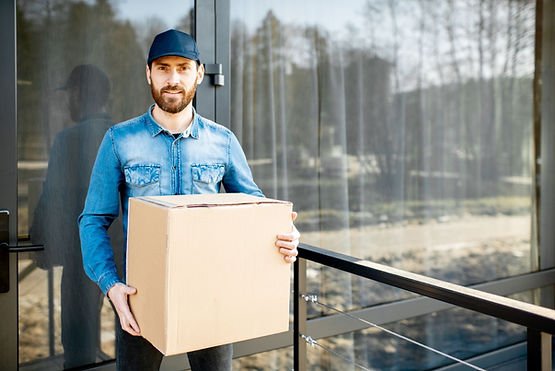Optimal Methods for Packaging and Labeling when Using Amazon FBA
3. Follow packaging requirements for specific products
7. Provide box content information
8. Adhere to pallet requirements (if applicable)
Welcome, aspiring Amazon moguls! Feast your eyes on the ultimate guide to mastering the art of packaging and labeling for Amazon FBA. Whether you’re a newbie or a seasoned seller, our trusty guide will have your products wrapped, sealed, and delivered with the finesse of a well-oiled machine. Prepare to dive into the world of secure packaging, proper sealing, and the nitty-gritty of labeling requirements. With our tips on FNSKU labels, product labels, shipment labels, box content information, and pallet requirements (if you’re into that sort of thing), you’ll soon be an FBA virtuoso. So buckle up, and let’s embark on this thrilling adventure of optimizing your Amazon FBA packaging and labeling prowess!
1. Package Products Securely

In today’s fast-paced world of electronic commerce, establishing a thriving online business has become an imperative for entrepreneurs and established businesses alike. Online sales, driven by the exponential growth of online marketplaces and the convenience of e-commerce platforms, have reshaped the way we shop and do business. Whether you’re looking to start an ecommerce business or expand your existing one, mastering the art of packaging is a pivotal aspect of the journey.
Amazon FBA, with its vast reach and customer base, is a prime choice for many ecommerce businesses, providing an efficient way to deliver products to customers. To ensure your own ecommerce store stands out in this competitive landscape, understanding the best practices for packaging is paramount. It’s not just about securing your products; it’s about creating an unforgettable unboxing experience that leaves a lasting impression on your customers and fosters loyalty in this ever-evolving business to business and business to consumer ecosystem. So, let’s dive deeper into the world of online store packaging and explore how you can elevate your ecommerce company through exceptional packaging solutions and services online. Let’s dive in!
Choose the Right Box for the Job
When it comes to packaging, size matters. Here’s the lowdown:
- Small box: For items less than 2 lbs and smaller than 6x6x6 inches.
- Medium box: For items between 2-3 lbs and smaller than 12x12x12 inches.
- Large box: For items between 3-50 lbs and smaller than 24x24x24 inches.
- Don’t squeeze a square peg into a round hole; pick the right box for your product.
Embrace the Power of Bubble Wrap
Bubble wrap is like a superhero, protecting your products from the perils of shipping. Use it generously to cushion your products, especially if they’re fragile or delicate. Remember, there’s no such thing as too much bubble wrap!
Play Tetris with Your Products
Master the art of product arrangement by ensuring that items fit snugly in the box without shifting during transit. Think of it as a game of Tetris but with real-life implications for your business. You want to fill any empty spaces with packing material to minimize movement and potential damage.
Double Up on Protection for Fragile Items
For particularly delicate items, consider using double boxing. Place your item in a smaller box, surrounded by cushioning material, and then put that box inside a larger one with additional padding. This double layer of protection can be a game-changer for fragile products.
Get Creative with Void Fill
Void fill isn’t just for filling gaps; it’s also an opportunity to elevate your brand’s image. Experiment with colored crinkle paper, biodegradable packing peanuts, or customized tissue paper to add a touch of pizzazz to your packaging. Remember, first impressions count!
There you have it! A foolproof guide to packaging your products securely for Amazon FBA. Follow these best practices and rest easy knowing your items are well protected on their journey to your customers. Happy packaging!
2. Seal Packages Properly
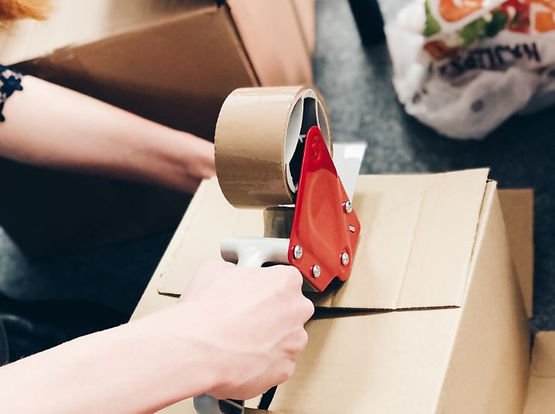
Your e-commerce store may be the virtual hub of your online retail presence, and your e-commerce website might be the digital front door, but it’s the tangible package that bridges the gap between the online retailer and the eager customer. The art of sealing packages goes beyond mere practicality; it becomes an integral part of your business model. Just as a physical store’s ambiance sets the tone for in-person experiences, your packaging choices in e-commerce businesses, both on your ecommerce website and when customers receive their orders, contribute to the overall perception of your brand. They communicate your commitment to quality and attention to detail, enhancing the value of your products beyond what’s merely seen on your business website. So, let’s embark on this journey to uncover the secrets of sealing that will elevate your e-commerce store and leave a lasting impression on those who sell online and those who buy. Ready to become a sealing superstar? Let’s go!
Choose Your Tape Wisely
Not all tapes are created equal. For Amazon FBA packaging, opt for pressure-sensitive packing tape that’s at least 2 inches wide. Avoid using duct tape or masking tape, as they lack the strength and durability needed for shipping.
Master the H-Taping Technique
Transform into a taping virtuoso with the H-taping technique, which provides extra reinforcement for your packages. To do this, apply tape along the center seam of the box, then apply two additional strips perpendicular to the center seam, creating an “H” shape. Voilà! Your package is now ready for whatever the shipping world throws at it.
Reinforce the Box Edges
Show your box edges some love by reinforcing them with additional strips of tape. This extra step can make a world of difference in preventing damage to your products during transit.
Waterproof Your Package (Optional)
For extra protection against the elements, consider using waterproof sealing tape or applying a layer of clear plastic wrap over the entire box. This can be especially helpful if you’re shipping products sensitive to moisture or during rainy seasons.
Keep it Clean
Make sure your sealing tape is free from wrinkles, bubbles, or dirt. A clean, smooth application will not only look more professional but also improve the overall strength and security of your package.
Don’t Forget the Inner Seals
If your product has an inner packaging or a bag, don’t neglect to seal it properly. This added layer of protection can help keep your products safe from dust, dirt, and damage during transit.
Double-Check Your Work
Before sending your package on its way, give it a gentle shake to make sure everything is secure and sealed correctly. If you hear any rattling or feel movement inside the box, it’s time to revisit your sealing strategy.
And there you have it – the secrets to sealing packages like a pro! With these best practices in hand, you’ll be well on your way to Amazon FBA packaging success. So go forth, dear reader, and seal with confidence!
3. Follow Packaging Requirements for Specific Products

Mastering the intricacies of niche packaging is akin to discovering hidden treasures in an expansive online marketplace. While you may have excelled in the art of packaging for physical products, the digital products category presents its own set of unique challenges and opportunities. As the e-commerce industry continues to witness exponential growth in e-commerce sales, selling digital products has become an integral part of the digital commerce ecosystem. Ensuring a seamless online shopping experience for customers looking to purchase and access digital products is crucial for businesses online. It’s a realm where packaging transcends the physical and ventures into the realm of user interfaces, digital downloads, and secure access. So, join me on this voyage as we unveil the golden rules of niche packaging, shedding light on how to enhance the appeal and functionality of your ecommerce store for digital products and thus, boosting your standing in the world of ecommerce businesses.
Plush Toys: Bag ‘Em Up
For our fluffy friends, place them in clear poly bags with a suffocation warning label. This keeps them clean, safe, and ready for their new homes.
Textiles: The Art of Folding
When it comes to textiles, presentation is key. Neatly fold and secure items like clothing or linens in a poly bag or shrink wrap. Don’t forget to add a suffocation warning label if using a poly bag.
Small Parts: Contain and Conquer
No one likes to chase after rogue screws or beads. Keep small parts in a sealed, clear plastic bag or a sturdy plastic container with a secure lid.
Liquids: Double the Protection, Double the Fun
For liquids, first, seal the container with a leak-proof lid, and then place it in a clear, sealed poly bag. This double layer of defense helps prevent spills and messes during transit.
Sharp Objects: Safety First
Always prioritize safety when packaging sharp objects. Cover any sharp edges or points with protective materials, such as bubble wrap or foam, and place the item in a sturdy box or rigid mailer.
Glass and Fragile Items: Swaddle Like a Pro
Cradle your glass and fragile items with ample cushioning material, like bubble wrap or packing peanuts. Consider double boxing for added protection, and don’t forget to label the package as “Fragile” or “Handle with Care.”
Electronics: ESD is Not Your Friend
Protect electronics from electrostatic discharge (ESD) by placing them in anti-static bags or using anti-static bubble wrap. This will keep your gadgets safe from the dreaded “zap” during shipping.
Batteries: No Sparks Allowed
When shipping batteries, make sure they’re properly insulated to prevent short circuits. Use non-conductive packaging materials and separate batteries from any devices they power.
By following these golden rules of niche packaging, you’ll ensure that your specific products are packaged to perfection, impressing both Amazon and your customers. So, go forth and conquer the world of niche packaging, one product at a time!
4. Apply FNSKU Labels

Behold, the mighty FNSKU label! This humble barcode plays a pivotal role in the Amazon FBA universe, ensuring your products are tracked, sorted, and shipped with precision. In this section, we’ll demystify the FNSKU label and reveal the secrets to applying it like a true Amazon FBA wizard. Ready to conjure up some FBA magic? Let’s go!
Decoding the FNSKU
The Fulfillment Network Stock Keeping Unit (FNSKU) is a unique identifier assigned by Amazon to each product in your inventory. This magical code allows Amazon to track your products throughout their FBA journey, from storage to shipment.
Print Your FNSKU Labels
Once you’ve listed your product on Amazon, you can generate and print FNSKU labels from your Seller Central account. Remember, the label should be printed in a clear, legible font and include both the barcode and the alphanumeric FNSKU code.
Label Placement Matters
When it comes to FNSKU labels, location is key. Place the label on a flat, smooth surface of your product’s packaging, avoiding any seams, edges, or corners. The label should be easily scannable, so keep it free from wrinkles, tears, or obstructions.
One Product, One FNSKU
Ensure each product has its own unique FNSKU label, even if they’re part of a set or bundle. This way, Amazon can accurately track each item in your inventory.
Cover Old Barcodes
If your product has an existing barcode, such as a UPC or EAN, be sure to cover it with your FNSKU label. This prevents any scanning confusion during the fulfillment process.
Stickerless, Commingled Inventory? Think Again!
While Amazon offers a “stickerless, commingled inventory” option, it’s best to stick with your trusty FNSKU labels. This ensures your products are always correctly identified and associated with your seller account, protecting your inventory from potential mix-ups.
FNSKU on Outer Packaging
If you’re using an additional outer box or package for shipping, don’t forget to place an FNSKU label on it as well. This helps Amazon keep track of your products at every stage of the fulfillment process.
And there you have it – the enchanted world of FNSKU labels, decoded! By mastering the art of applying these crucial labels, you’ll be well on your way to Amazon FBA success. So wield your FNSKU wand with confidence, and let the magic of seamless inventory management unfold!
5. Include Product Labels
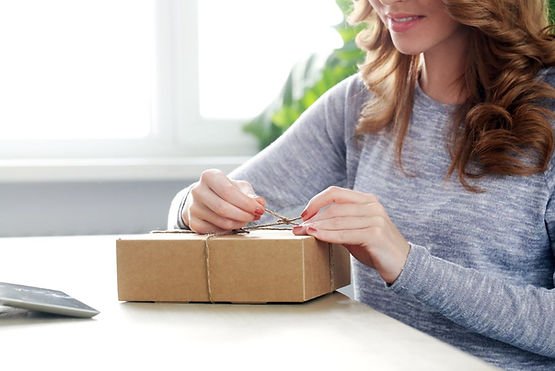
Welcome to the world of product labels, where branding meets customer delight! In this section, we’ll explore the importance of including product labels in your Amazon FBA packaging and how to make them shine. Ready to up your label game and leave a lasting impression on your customers? Let’s get started!
The Power of Branding
While customers shop online, your product labels serve as a miniature canvas for conveying your brand’s essence and messaging. These labels are your chance to leave an indelible mark on the minds of your audience. As you craft your business plan and navigate the competitive landscape of online businesses, you’ll find that successful business strategies often hinge on attention to detail. In the world of ecommerce, where an ecommerce website acts as your digital storefront and e-commerce companies vie for the attention of new customers, the way you present your products through product labels can make all the difference. Harnessing the capabilities of e-commerce software to design and implement compelling product labels can be a game-changer in the e-commerce industry, helping you stand out and draw customers into your unique online retail world.
Having your own website is not just a luxury but a necessity. As online stores proliferate and competition escalates, visibility on search engines becomes paramount for the success of your ecommerce website. Your business idea, no matter how innovative, needs to be discovered by potential customers actively looking to shop online. To stay ahead in the ever-evolving e-commerce trends, it’s imperative to craft a robust business strategy that includes optimizing your e-commerce site for search engines. This strategic approach will help attract customers in a world where shopping online and selling online have become the norm, and ecommerce brands are constantly vying for attention and market share in the fiercely competitive e-commerce stores landscape.
The Essentials: What to Include
At a minimum, your product labels should include the following information:
- Product name
- Brand name or logo
- Ingredients or materials (if applicable)
- Size or dimensions
- Manufacturing country
- Safety warnings or precautions
- Any certifications or compliance marks (if applicable)
Online Store Design Matters
An eye-catching, well-designed label can make your product stand out from the competition. Invest in professional design services, or tap into your inner artist to create a label that’s visually appealing and aligned with your brand identity.
The Perfect Fit
Choose the right label size for your product packaging. Your label should be large enough to display all necessary information clearly but not so large that it overwhelms the packaging or detracts from the overall aesthetic.
Material Choices
Select a label material that suits your product and packaging. Consider factors like durability, moisture resistance, and adhesive strength. Common materials include paper, vinyl, polyester, and polypropylene.
Test Before You Commit
Before mass printing your labels, do a test run to ensure they adhere well to your product packaging and can withstand the rigors of shipping and handling. Remember, a well-applied label is a happy label!
Apply with Precision
When it’s time to apply your labels, make sure they’re properly aligned and free of bubbles or wrinkles. A smooth, professional-looking label application speaks volumes about your brand’s attention to detail.
By incorporating these best practices into your product labeling strategy, you’ll be well on your way to delighting customers and elevating your brand in the competitive world of Amazon FBA. So go forth, dear reader, and let your product labels be the gateway to a world of unforgettable customer experiences!
6. Apply Shipment Labels
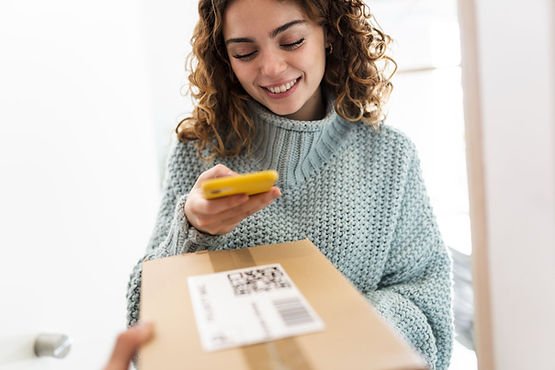
Ah, shipment labels – the unsung heroes that guide your precious cargo to the right Amazon fulfillment center. In this section, we’ll explore the fine art of applying shipment labels, ensuring your products glide smoothly through the shipping process. Ready to embark on this shipping adventure? Let’s set sail!
Generate Your Shipment Labels
Once you’ve created a shipment plan in your Amazon Seller Central account, it’s time to generate those all-important shipment labels. Each box in your shipment requires its own unique label, so be sure to print the correct number for your needs.
Size Matters
Amazon recommends using shipping labels that measure 3 1/3 x 4 inches. This size ensures optimal readability and scanning during the shipping process.
Crisp, Clear, and Legible
When printing your labels, make sure they’re clear, legible, and free of smudges. A high-quality laser printer is your best friend in this endeavor.
The Grand Reveal: Shipment Label Placement
Time for the pièce de résistance – applying your shipment labels! Place the label on a flat, smooth surface of your package, making sure it’s free from seams, edges, or corners. Keep the label easily scannable, and avoid any wrinkles or obstructions.
Box Content Labels: A Bonus Round
If you’re shipping multiple boxes with different products, consider applying box content labels to each package. This will help you (and Amazon) stay organized, ensuring the right products reach the right destination.
Say No to Overlapping Labels
Avoid the cardinal sin of shipment label application – overlapping labels. If you need to replace or update a label, remove the old one completely before applying the new one.
Double-Check Your Work
Before waving goodbye to your shipment, give each package a once-over to ensure all labels are properly applied and scannable. A smooth shipping process starts with flawless label application.
And there you have it – the art of applying shipment labels, mastered! By following these best practices, you’ll ensure your Amazon FBA packages arrive at their destination swiftly and efficiently. So go forth, dear reader, and ship with confidence, knowing your labels are guiding your products to their ultimate destiny!
7. Provide Box Content Information

Welcome to the organized utopia of box content information! In this section, we’ll unlock the secrets to providing box content information that keeps your Amazon FBA shipments organized, efficient, and ready to impress. So, strap on your sorting hat, and let’s dive into the wonderland of box content mastery!
The Box Content Rationale
Box content information helps Amazon manage your inventory efficiently, expediting the check-in process and ensuring your products reach their designated shelves in record time.
When Box Content Information is a Must
If your shipment contains multiple boxes or a mix of products, you’ll need to provide box content information. It’s also required if you’re using Amazon’s stickerless, commingled inventory option – though, as we’ve discussed earlier, FNSKU labels are the way to go!
Two Paths to Box Content Bliss
You can provide box content information in one of two ways: by manually entering the information in your Seller Central account or by uploading a .csv or .txt file. Choose the method that suits your organizational style and workflow.
The Elements of Box Content Excellence
When creating your box content information, be sure to include the following details for each box:
– FNSKU
– Product name
– Quantity per product
– Box dimensions and weight
Matching Box Content to Shipment Labels
To keep your Amazon FBA adventure running smoothly, ensure your box content information matches the corresponding shipment labels. This will help Amazon connect the dots and process your shipment with ease.
Keep It Updated
If you make any changes to your shipment after submitting your box content information, don’t forget to update the data accordingly. Amazon appreciates accurate and up-to-date information, and so will your customers!
Verify, Verify, Verify
Before bidding adieu to your shipment, double-check that your box content information is accurate and complete. This final verification step will set your shipment on the path to success and reduce the chances of any hiccups along the way.
By mastering the art of providing box content information, you’ll be well on your way to an organized shipping wonderland. So embrace the power of box content organization and watch as your Amazon FBA business soars to new heights of efficiency and success!
8. Adhere to Pallet Requirements (if Applicable)
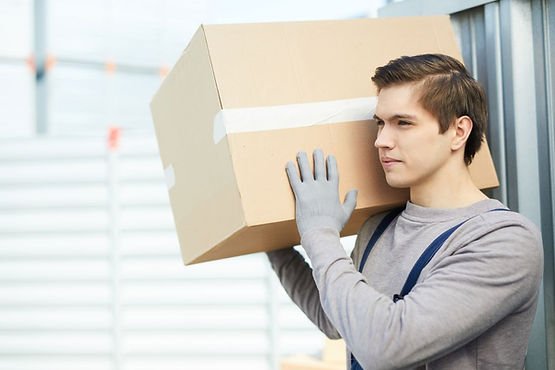
Step right up and behold the majestic world of pallet requirements! If you’re shipping large quantities of products to Amazon FBA, chances are you’ll need to master the art of palletizing. In this section, we’ll explore the ins and outs of Amazon’s pallet requirements, ensuring your shipments sail through the process like a well-palletized dream. So, grab your pallet wrap, and let’s get started!
The Pallet Lowdown
Amazon has specific pallet requirements to ensure smooth and efficient handling at their fulfillment centers. By adhering to these guidelines, you’ll avoid delays, additional fees, and possible rejection of your shipment.
The Perfect Pallet
When choosing your pallets, opt for four-way access, wooden pallets that measure 40 x 48 inches and are in good condition. Amazon’s fulfillment centers use forklifts and pallet jacks, so your pallets need to withstand their weight and maneuverability requirements.
Stack ‘Em High, Stack ‘Em Right
When stacking your boxes on the pallet, follow these golden rules:
- Stack boxes squarely, with no overhang
- Distribute weight evenly across the pallet
- Use vertical columns, interlocking patterns, or a combination of both
- Place heavier boxes on the bottom and lighter ones on top
- Do not exceed a height of 72 inches, including the pallet
The Art of Pallet Wrapping
Secure your boxes to the pallet using a stretch wrap or pallet bands. Wrap the entire stack at least five times, and ensure the wrap covers the top and bottom edges of the pallet. This will keep your boxes snug and secure during transit.
Weigh It In
The total weight of your pallet, including the products and the pallet itself, should not exceed 1,500 pounds. Any pallets over this weight limit may be subject to additional fees or rejection at the fulfillment center.
Label Like a Pro
Each pallet requires a unique 4 x 6-inch pallet label, which should be placed on the top center of the short side of the pallet. Make sure the label is easily scannable and free of obstructions.
The Final Inspection
Before bidding farewell to your palletized shipment, give it a thorough once-over to ensure it meets all of Amazon’s requirements. A well-prepared pallet is a happy pallet, and a happy pallet means a smooth shipping process.
By embracing these best practices for palletizing, you’ll ensure your Amazon FBA shipments are the epitome of pallet perfection.
Bravo, Amazon FBA packaging and labeling aficionados! You’ve mastered the art of secure packaging, proper sealing, and labeling requirements like true pros. From FNSKU labels to box content information, you’ve left no stone unturned in your quest for excellence. And let’s not forget the importance of adhering to pallet requirements (if you’re into that sort of thing). Your attention to detail will surely result in happy customers and fewer headaches. Go forth, Amazon FBA champions, and may your packaging and labeling be both exceptional and eco-friendly!

